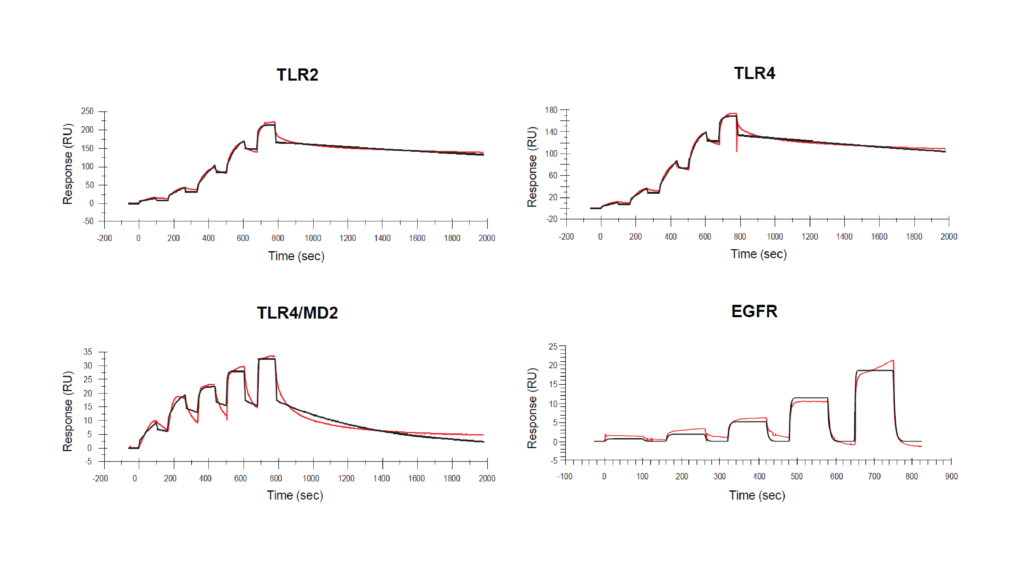Biacore studies prove binding of bacterial lysate OM-85 to Toll-like receptors
OM-85, also known as Broncho-Vaxom®, is an extract of more than 21 different respiratory pathogenic bacterial strains that is indicated for the prevention of recurrent respiratory infections in both adults and children. Although OM-85 has been in clinical use for more than four decades, the complex and multiple mechanisms underlying its immune modulatory activity has not been fully elucidated. In a new study [1], which is published in Mucosal Immunology, investigators from the Institute for Research in Biomedicine (IRB) in Bellinzona, Switzerland, demonstrate that OM-85 stimulates the immune response via Toll-like receptor (TLR) 2 and 4. Using bone-marrow derived dendritic cells from knock-out mice deficient in different TLRs, Drs. Hanif Khameneh, Greta Guarda and their colleagues elegantly demonstrate that in mice, the immune response to OM-85 is primarily mediated through TLR4. In human immune cells, the response to OM-85 is regulated by TLR2 and TLR4, resulting in the activation of a unique immunoregulatory gene signature.
Oncolines contributed to the work of the IRB group and OM Pharma by performing real-time binding experiments using surface plasmon resonance on a Biacore. TLRs were immobilized on Biacore chips, and an OM-85 concentration range was sequentially injected over the surface using single-cycle kinetics (see Figure). OM-85 bound to TLR2, TLR4 and TLR4/MD2, a complex of TLR4 and myeloid differentiation factor-2. These studies demonstrate for the first time direct binding of OM-85 components to immune cell receptors. The selectivity of the interactions, which were quantified by determining target residence times, were consistent with the cell-based assays performed at IRB.
The study illustrates the power of surface plasmon resonance to study molecular interactions. Oncolines has developed more than 120 kinase binding assays on its ResidenceTimer platform [2]. Visit www.residencetimer.com to learn more. Information requests for studying specific small molecule protein interactions, or more complex interactions, such as described in the article in Mucosal Immunology, can be sent to services@oncolines.com.
References
-
- [1] Khameneh et al. (2024) The bacterial lysate OM-85 engages Toll-like receptors 2 and 4 triggering an immunomodulatory gene signature in human myeloid cells. Mucosal Immunology online first 4 March 2024.
- [2] Willemsen-Seegers et al. (2017) Compound selectivity and target residence time of kinase inhibitors studied with surface plasmon resonance. Journal of Molecular Biology 429, 574-86.







